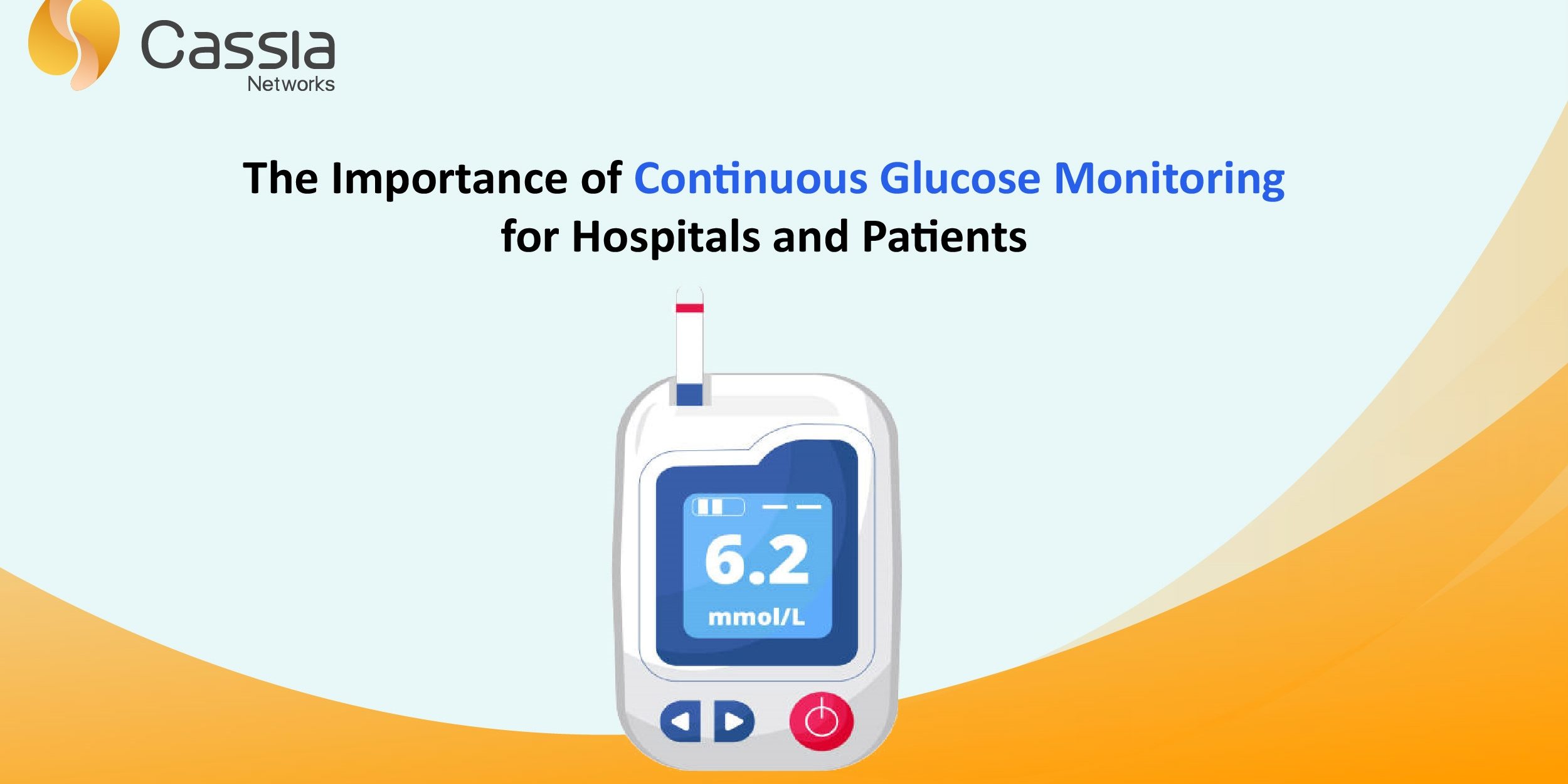According to the CDC, an estimated 37.3 million people in the United States suffer from diabetes. Roughly 28.7 million people have been diagnosed with diabetes and 8.5 million people are undiagnosed. Currently, there are four types of diabetes: Type 1, Type 2, Prediabetes and Gestational. Regardless of which type of diabetes a person has or the severity of the diabetic patient, the health complications can be life-threatening over time. This blog will discuss the importance of CGM, its evolution and deploying large-scale CGM solutions in hospitals and clinics.
Why is CGM important?
Self-testing blood sugar (blood glucose) is an important tool in managing diabetes and preventing complications. Regular blood sugar monitoring is the most important thing one can do to manage Type 1 or Type 2 diabetes. With regular monitoring, one can see how their levels are changing and what is contributing to the levels going up or down. For example, certain foods, medications and activity levels all play important roles. With this information, those with diabetes can then work with their health care professional to determine the best plan that’s suitable for diabetes management.
Many people are now using devices called continuous glucose monitors (CGM). These devices measure one’s blood sugar every few minutes using a sensor inserted under the skin. A transmitter worn on the body sends blood sugar information wirelessly from the sensor to a smartphone app. Some devices show one’s blood sugar reading at all times on a smartphone or smartwatch, and an alarm goes off if one’s blood sugar is going up or down too quickly.
The latest innovations in diabetic care
Fortunately, there are treatments to help people living with diabetes. Over the years, leading medical companies have developed innovative continuous glucose monitoring (CGM) solutions to allow diabetic patients to monitor, manage and track their sugar levels in real-time without the need to perform a fingerstick each time blood is needed. While CGM systems have been around for several years, the latest and greatest methods have significantly improved in accuracy, features and convenience. Let’s take Medtronic’s CGM Sensor as an example. This small wireless sensor can continuously measure a patient’s glucose levels in real-time and can predict a patient’s high or low glucose levels up to an hour in advance. Patients can easily track their blood glucose levels in real-time using an application. This makes CGM cost-effective, efficient and convenient for both patients and physicians.
Deploying large-scale CGM solutions in hospitals
In-hospital use of CGM is appropriate when frequent glucose monitoring is required, such as for those diagnosed with type 1 diabetes, patients on certain glucose medications, those with a long history of diabetes, etc. Furthermore, CGM may be critically important for patients with severe COVID-19 and insulin resistance, patients on complex insulin regimens, as well as those who are at high risk for hypoglycemia. Patients equipped with wireless CGM sensors will receive real-time notifications in the event their blood glucose levels begin to deviate from their range. These alerts are also sent to their primary caregiver and medical staff allowing them to continuously monitor patients concerning the possible development of hyperglycemia and hypoglycemia, reducing any potential complications in patients in the ICU.
Cassia’s S2000 Bluetooth gateway and IoT Access Controller (AC) for large scale CGM deployments in hospitals and clinics
Medtronic, the world’s leading medical technology company has developed a continuous blood glucose monitoring solution for use in hospitals and clinics and has partnered with Cassia Networks to deliver a scalable, secure and reliable wireless connectivity solution to collect patient data for real-time analysis. Currently, Cassia’s S2000 Bluetooth gateways and IoT AC are being used to collect and transmit real-time data from patients equipped with Medtronic’s blood glucose monitors in dozens of hospitals and clinics. Cassia’s patented Bluetooth Roaming technology allows patients to move freely within the Bluetooth coverage of the hospital without losing real-time data allowing medical staff to provide a better quality of care for diabetic patients.
In sum, CGM has become increasingly important for both healthcare providers and patients. Recent advancements in technology have made it easy for patients with diabetes to monitor, manage and control their condition with wireless sensors and applications. As digital health evolves and technology advances, we can expect to see new and innovative medical devices that will benefit the entire healthcare community and those diagnosed with diabetes.








